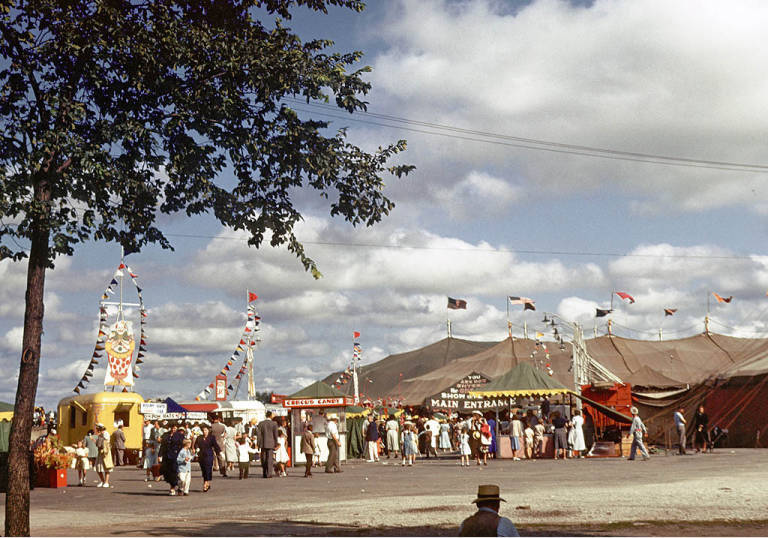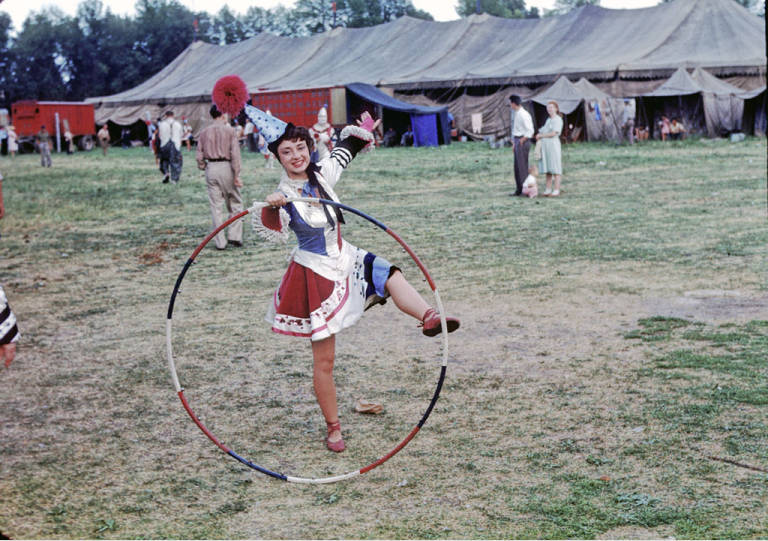20th Century Circuses in Illinois: Introduction
The word “circus” can bring to mind many different ideas. The classic components include enormous tents, clowns, lion tamers, trapeze artists, and cotton candy. However, the concept of the circus can also bring to mind less-savory topics as well: minstrel shows, animal cruelty, and the exploitation of “freaks” for entertainment. In examining historical images of circuses, it is important to note that many aspects of these shows have not continued to this day. Outdated terms for circus performers and the “taming” of wild animals for the audience’s entertainment are no longer considered lighthearted; it is widely accepted that the harm these terms and actions brought about eclipse any audience enjoyment that may have been gained from them. In this exhibit, the focus is on images of 20th century circuses during their shows in Illinois and the Midwest; the circus, as it is presented here, no longer exists in modern times. However, during its heyday, the 20th century circus captured the imagination of generations of Americans.
Because so many different performance types are associated with the circus, circus history is long and complex. What is a circus and what is not? Some historians categorize a circus by the performances and location: at the most basic level, a classic circus has performers, animals, and takes place in rings, under a tent. Circuses also travel, bringing their shows from town to town. Historian Helen Stoddart, in her book Rings of Desire: Circus History and Representation, also notes that risk-taking is also inherent in the circus. Trapeze artists, fire-eaters, lion-tamers—the list of thrillingly dangerous circus acts goes on. She writes that the “The body in the circus is utterly self-reliant; it is preserved by skill and strength only, never by faith, fate or magic” [1]. A unique aspect of circuses is how they do not tell narrative stories in the way that plays or operas do. Circuses often rely more on performances paired with music, and sometimes forgo words all together, as in the case of some clowns or mimes.
From ancient Roman circuses, English horseback riding shows in the 1700s, to the modern circus of the early 1900s, this entertainment form has morphed and changed but continually held the attention of the public. The daring acts and singular atmosphere made the circus an important part of many lives in the first half of the 20th century.
[1] Helen Stoddart, Rings of Desire: Circus History and Representation, (Manchester: Manchester University Press, 2000), 4, http://archive.org/details/ringsofdesirecir0000stod.


